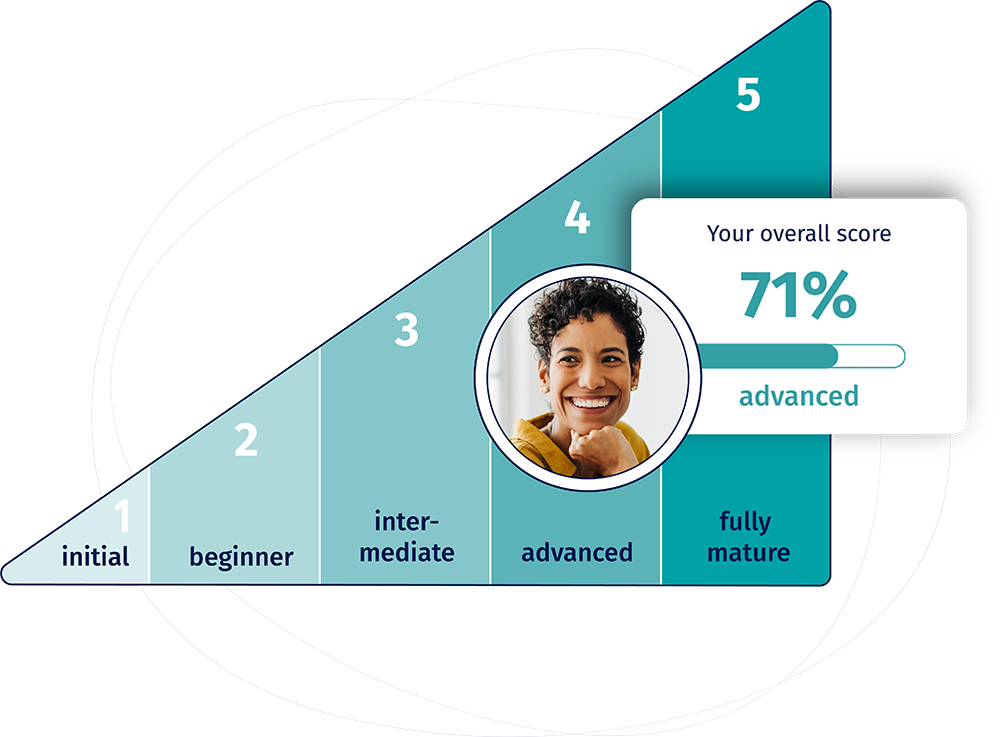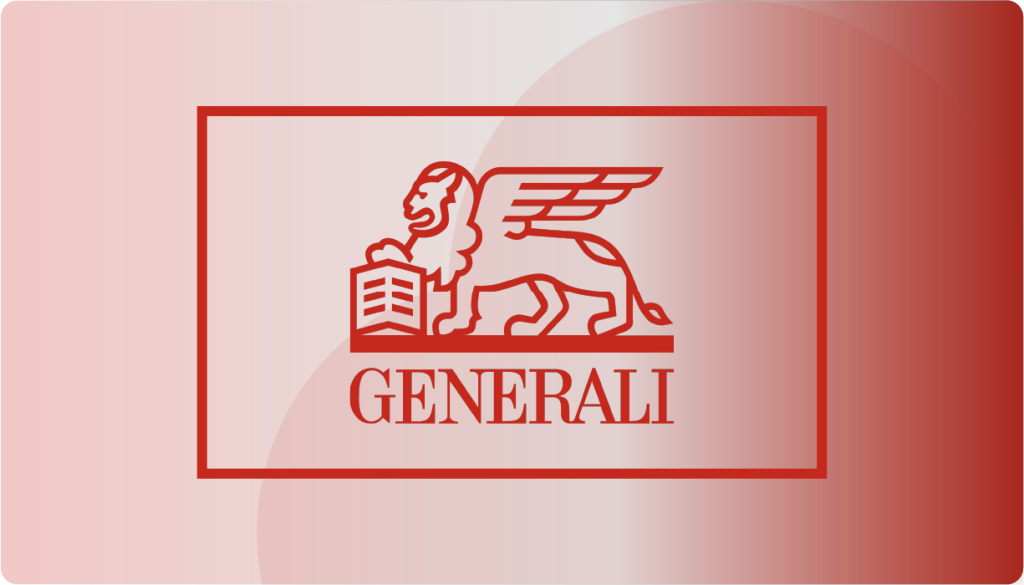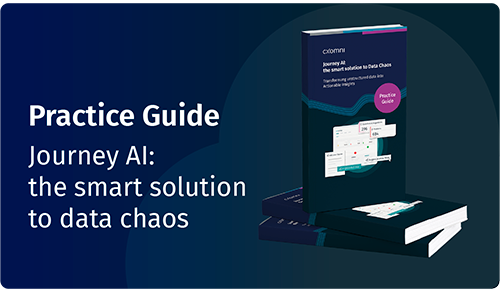Journey Management: From implementation to realization
Why is Customer Journey Management on top of many companies’ agendas? Do Journey Management platforms really provide a better view of the customer’s experience? Can CX be managed even more successfully with these tools? These are the questions that cxomni’s Head of Innovation Wolfgang Weber and Joana de Quintanilha, Vice President and Principal Analyst at Forrester, discussed in one of our latest webinars.
In this part of our blog series, you will learn what distinguishes Journey Mapping from Customer Journey Management and how a Journey Management Framework ensures transparency in CX projects. Also learn how data transforms a journey map into a management tool and what steps have to be considered when starting with Journey Management.
Customer Journey Mapping is the starting point
Customer Journey Mapping is a regular task for CX teams, and team members are very good in understanding the needs of their target group. The challenge, however, is not only to collect insights, but to use them in a sustainable way: for example, as Actionable Insights for improving products and offerings. In other words, it’s about understanding the journey, not just visualizing it.
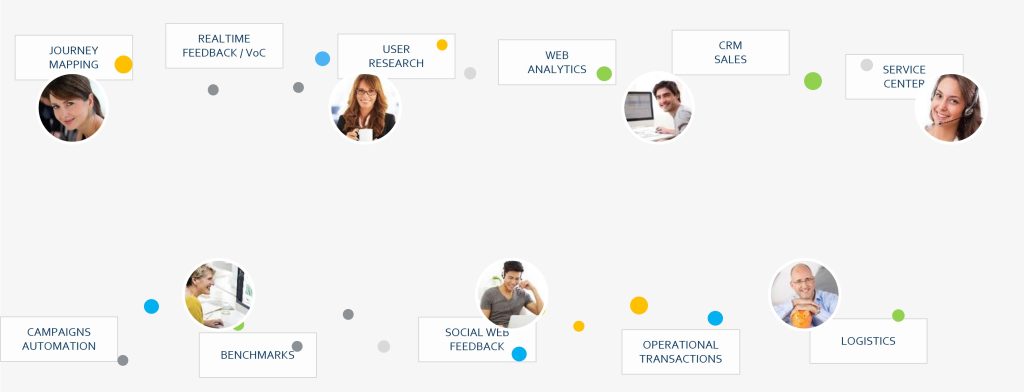
But how do companies handle customer journeys? Typically, there are different departments with individual customer tasks. While marketing or sales may map customer journeys, another department may focus on user research. Social Web teams handle customer communications, and other stakeholders organize operational transactions. This results in a decentralized collection of data, KPIs, and surveys which can be used for CX analysis, but are not shared among internal teams. This results in different journey maps, service blueprints, or user story maps that are incompatible with each other.
Normally, departments prefer to start journey mapping with whiteboarding tools: they can be used quickly and collaboratively as a SaaS solution, and are easy to use as a workshop tool. This is a very important first step towards better customer understanding. However, when each stakeholder introduces individual tools, KPIs and mapping projects, the result is a “journey patchwork” rather than an enterprise-wide standard. What’s more, these journey maps or service blueprints are often one-off projects with no sustainability.
But times are changing: CX teams want to analyze customer journeys across departments throughout the company, enrich them with data, and use them as a management tool in the long term. At the same time, they recognize that this requires standardization. And so companies are in a phase where journey mapping is increasingly becoming Customer Journey Management.
The Journey Management Framework as a Standard for CX Projects
A Journey Management Framework is the answer. It ensures that different tools and mapping styles are unified and standardized. Therefore, a Journey Management Framework consists of the following three components
- Taxonomy: Organizes information so that it can be shared and used across the organization.
- Terminology: Defines all technical terms used in the Journey Management Framework.
- Information Architecture: Provides the blueprint for aggregating and distributing data and insights across the organization.
Everyone involved in Journey Management benefits from a framework. It ensures that project participants develop a common understanding of journeys and terminology: from the meta-journey to moments-that-matter and sub-journeys. So a framework makes it easier to document and manage journeys, especially in larger organizations where different departments work with different systems.
Use Case: Holistic visualization and aggregation of metrics
Let’s take a look at a use case such as integrating data to gain insights. All relevant data sources are usually available within the organization. The challenge is, that different stakeholders use different tools to run campaigns or transactions. These may include CRM in sales, web analytics in marketing, or service center systems in customer support. But what’s more important: These systems are all related to the journey and generate CX data. Because it is the customer who interacts with the company or its offerings via these systems.
A Journey Management software like cxomni can provide transparency by aggregating and processing this heterogeneous, distributed data. Therefore, data from the various systems is transferred to the Journey Management software via APIs and linked to the respective touchpoints and/or sub-journeys. Customer behavior and experience data is no longer viewed separately at the departmental level, but in the context of the customer journey (Customer Journey Analytics).
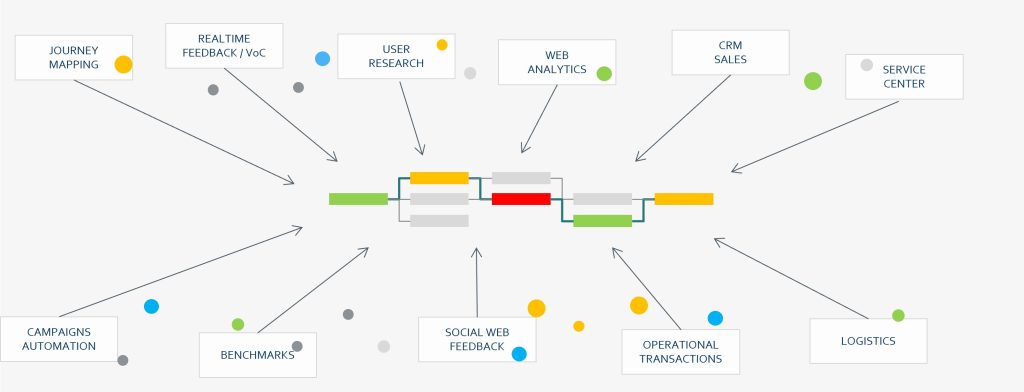
This requires standardized customer journeys and specifiations for data normalization. Because then data can be evaluated in the context of the journey and appropriate conclusions (Actionable Insights) about the journey performance are possible. In addition, Journey Management ensures that different values (CSAT, NPS, star ratings) can be compared. Depending on the tool set, this also provides the basis for further sentiment and topic analyses.
In cxomni, for example, customer feedback can be analyzed regarding tonality and topics. This way, CX teams get a realistic picture of how customers feel about an interaction and what topics currently drive them.

Customer Journey Management: 5 Steps to Implementation
- Definition of taxonomy and terminology: The first step is to define the technical terms and phrases for the project, as well as the structure for organizing information. Often there are different wordings used within in the company: Is an email a channel or a touchpoint? This needs to be standardized to avoid misunderstandings. A first draft is often sufficient, which can then be expanded and adapted as the project progresses. All stakeholders who already work with journey maps should be invited to this phase.
- Identification and and prioritization of moments-that-matter and touchpoints: The goal is to identify the most relevant and perhaps critical points along the customer journey. This helps to determine which moments should be optimized immediately and which should be optimized later.
- Journey visualization and development of Journey Repository: Journey Management tools such as cxomni offer the advantage that even complex customer journeys can be visualized from the meta- to the sub-journey with personas and moments that matter. Since they are created and stored in the software, a journey repository is created almost automatically during the visualization. With the help of such a repository, even large numbers of journeys can be managed and filtered transparently.
- Journey Measurement: Customer must be continuously enriched with fresh insights, if they need to become a management tool. Rgular updates with customer feedback and experience data are essential, because otherwise journey maps remain a snapshot in time. Much of this data (CRM, user research, social web, etc.) is already available within the organization. These data sources can be quickly integrated through journey management software APIs and linked to the appropriate journeys.
- Orchestration of Actionable Insights: To drive continuous CX improvement, CX teams need to share the insights (pain points, system requirements, innovation ideas, etc.) they gain through data aggregation and analysis. Stakeholders in marketing, product management, sales, or service receive valuable recommendations for action in the context of touchpoints and customer journeys in real time.
Summary:
Customer journey management is not an option, but a necessity if companies want to understand customer needs and anticipate market trends. Many organizations have reached the point where journey maps are no longer sufficient or where research results and customer feedback remain in different internal silos and are not translated into a journey or product context. These companies are looking for a workflow that allows them to not only visualize journeys, but also to directly trigger and track optimizations. Customer Journey Management helps to better understand customers, optimize their experiences, increase efficiency, and gain a valuable competitive advantage. Companies that choose to implement Customer Journey Management are well equipped to meet the ever-changing demands of the marketplace, to innovate, and to retain and, ideally, delight their customers over the long term.
Interested in deeper insights and a guide for the implementation of journey management? – Download our Playbook!



